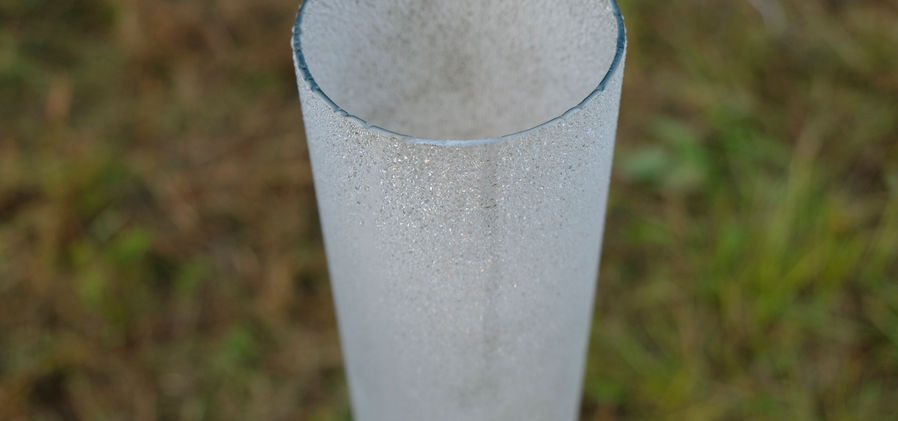
CRADLE
ELIZA EVANS
Title: Cradle, a site-specific installation on the grounds of ChaNorth.
Size: 26 feet (length) by 22 feet (width) by 8 feet (height)
Materials: Metal, Plastic, Monofilament
Cradle presents the viewer with two sets of voids. The first is a simple maze of fencing that can be easily navigated. Cradle is intended to evoke absence and expectation.
The work is an interpretation of a small contemporary American chestnut tree orchard. The fence inhibits deer from browsing on young trees and the tree protectors shield the absent tree from rodents and agricultural spraying. This structure is the minimal systemization required to protect a species that once thrived in this area on its own.
American chestnuts comprised one-third of the US forest from Maine to Georgia and from the Atlantic to the Ohio river valley. In the 1880s a New York nurseryman imported a Japanese ornamental chestnut tree which carried a fungus to which it was resistant, but the American chestnut was not. The Bronx Zoo identified the in 1904, and by 1930 nearly all American chestnuts (3-4 billion trees) disappeared from their native range. The American chestnut is “functionally extinct.” New growth emerges but does not mature before it succumbs to blight.
Since the 1980s there have been several efforts—a lot of time, money, and research-- to revive the American chestnut through hybridization and, more recently and more successfully, genetic intervention. The longer-term success of these efforts depends on breeding hybridized or genetically modified trees with unmodified trees in controlled environments. Unmodified trees are called “mother trees.” The mother trees will cross-pollinate with altered trees for 5 to 7 years before succumbing to blight. Half of the offspring and the offspring of all successive generations will perish. In the context of species death, this is what success looks like.
The chestnut’s revival seems quaint, but this specific case tells us a lot about what is required to take the long, multi-generational view to pull a species back from the brink. Species extinction and climate change invert our cultural understanding of nature and resilience. For many species, there will be little resilience without large scale, systematic intervention. Can our grid patterns and input schedules adequately substitute for and eventually reanimate natural processes over the long-term? What are the challenges of inspiring nostalgia for something no one remembers? What other losses--other forms of life, languages, cultures--will we be compelled to accept because we cannot do otherwise? How are we likely to interpret their loss then?











